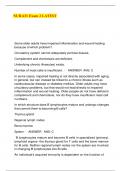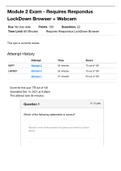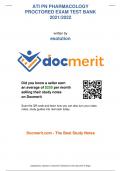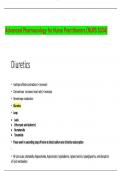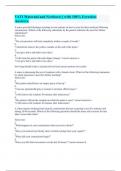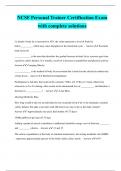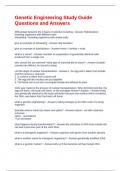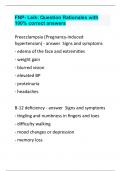Tentamen (uitwerkingen)
NUR 631 Exam 2 LATEST questions with veryfied answers
- Vak
- Instelling
NUR 631 Exam 2 LATEST questions with veryfied answersNUR 631 Exam 2 LATEST questions with veryfied answersNUR 631 Exam 2 LATEST questions with veryfied answersNUR 631 Exam 2 LATEST questions with veryfied answers
[Meer zien]
